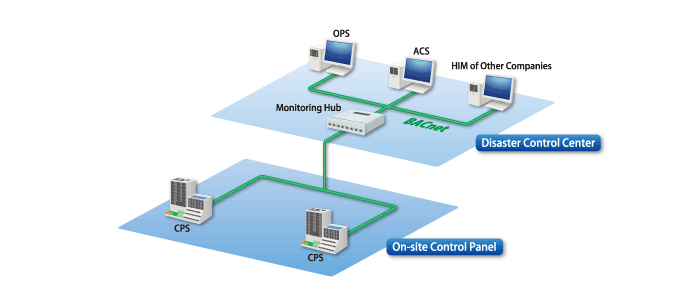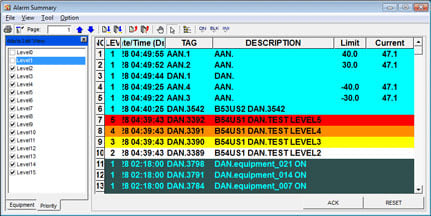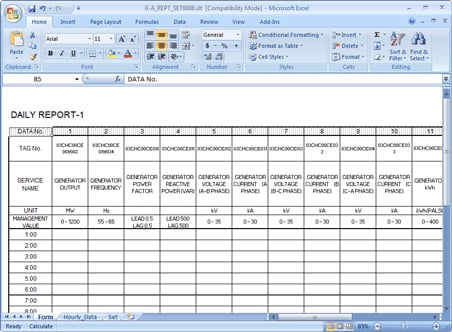Office Building - Monitoring System for Power Receiving and Transforming Facilities
Overview
The system performs electricity monitoring of power receiving and transforming facilities in the head office building of a certain company, along with monitoring and operation of air conditioning, lighting equipment, elevators and other facilities to achieve comprehensive building management.
Disaster prevention facilities are also managed to aid in safe building management in the event of a disaster.
Background to Introduction and Challenges Faced
The system was introduced in a large building for the first time as a building management system pursued in collaboration with other companies.
In addition to electrical equipment, functionality as an integrated building management system covering elements such as air conditioning and elevators was also adopted.
Effects of Introduction
Through introduction of the system, complex outage restoration control in the event of a disaster can be handled, and energy can be saved through the automated control of lighting equipment.
Furthermore, the system can be freely modified, making maintenance easy even after the start of operation.
System Configuration

Features
Monitoring and Operational Features
BACnet Collaboration
By working with an HIM from another company using the BACnet communication protocol, the facilities are collectively monitored and operated through the HIM*.
BACnet stands for Building Automation and Control Network, and refers to a communication protocol standardized for building automation (BA) and control networks.
- *HIM: Human Interface Machine The term is also referred to as HMI, or Human Machine Interface.
Outage Restoration Control
In the event of a power outage, circuit breakers are cut and cutoff control of equipment is performed based on the priority of each piece of equipment.
When power is restored, the circuit breakers reset and equipment is re-energized.
Group Start-stop Control
Equipment subject to start-stop control can be operated on the basis of pre-registered groups.
Alarm Display
When an equipment malfunction occurs, a real-time alarm is displayed on the monitoring screen, supporting early discovery of abnormalities. A per-device history of alarm triggering and restoration can also be displayed.

Trend Display
Product manufacturing status, equipment operational status and fault signals can be managed through a trend display.
Real-time trends covering periods of up to 24 hours and historical trends for up to 30 days are displayed.

Management Support Features
Forms
Data collected from equipment is managed in the form of daily, monthly and yearly reports.
In addition, printing at regular intervals or based on customer requests is also possible, allowing information on instantaneous values, segment average, maximum and minimum values, accumulated difference and cumulative on/off times to be ascertained.

-
Related Products
Products
- GTCC
- Steam Power
- IGCC
- Geothermal
-
Gas Turbines
- Product Lineup
- Comparative Performance
-
Technical Information
- Gas Turbines for Mechanical Drive Applications
- Cutting-Edge Elemental Technology Producing 1600°C Class J Gas Turbines
- Development of High-Efficiency Gas Turbine Applying 1600°C Class J Technology
- Combustor Technologies Supporting Stable Operation
- Overview and Verification Status of T-Point 2 Demonstration Facility
- Comprehensive Efforts from Development to Manufacturing
- Summary of Orders
- Development History
- Product Selection Assistant (Middle & small Class)
- Aero-derivative Gas Turbines
- Steam Turbines
- Boilers
- Air Quality Control Systems (AQCS)
- Generators
-
Control Systems
- What is DIASYS?
- DIASYS Netmation / DIASYS Netmation4S
-
DIASYS Optional Products
- IR-S Infrared Flame Detector
- Net IR-S Infrared Flame Detector
- Rail Mounting Net IR-S
- Boiler Tube Leak Detector
- Shaft Vibration Analyzer
- Simulator
- Advanced Combustion Pressure Fluctuation Monitoring System (A-CPFM) / Combustion Pressure Fluctuation Monitoring System (CPFM)
- Multi-Coal Fired Boiler Optimum Control
- DIASYS Solutions
- Fuel Cells
- Others
- Catalogue
- HIACS Series
- Technical Report